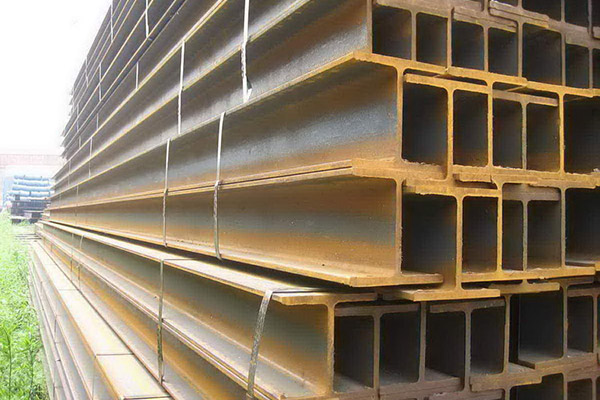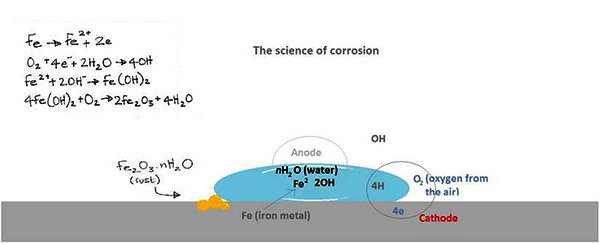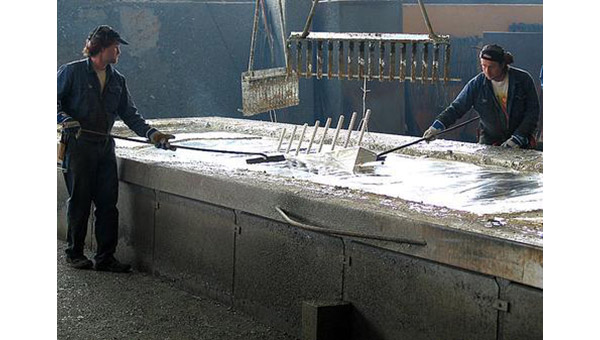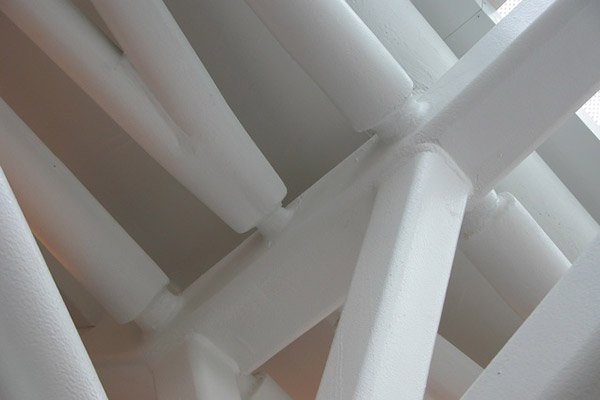The steel beam receives its protective coatings ready for its life in the City.
Chapter 3: Towards adulthood
If you are reading this chapter, that probably means you survived the first two, proving you are remarkably strong and persistent. Having got this far, it won’t be difficult to get to the end of the steel beam’s journey which is, you’ll be relieved to know, very close to the end.
We left the previous chapter with the beam completely welded and cut to its final shape, just waiting for something to happen.
I will now describe the “dressing” of the beam and its trip from Yorkshire to its final, distinguished location in a building in the City of London, overlooking St Paul’s Cathedral.
I and the engineer now had to follow our gentle guide in a much quieter area of the facility (in comparison with the previous ones) to observe the last few remaining “cosmetic” steps.
As usual, I first have to be a bit educational and try to explain what I learned from the engineer who was so passionately explaining to me what was happening.
The weakness of adolescence
Steel, as I described earlier, combines the ductility of iron with the hardness of carbon but it also comes with a few weakness inherited mainly from iron: oxidation (corrosion) and the way it reacts to fire.

Structural steel beams
Protecting steel against corrosion
The first weakness to be worked on is corrosion, which starts to happen when the humidity rises above 65% and, as you can imagine, this can be an issue in London, where the average humidity is above 77%.

Diagram showing how corrosion affects steel
Luckily, as our kindly guide explained to us, there are a variety of ways to avoid oxidation.
The most commonly used anti-corrosion treatments can be listed as: metallic coating (e.g. hot-dip galvanizing), coating (1-4 layers) and a combination of metallic and organic coating. The choice of treatment depends on the extent to which the beam will be in contact with humidity during its life after installation. If a beam is exposed to atmospheric events, for example, it will probably have to be galvanized.
Since our beam was supposed to be positioned in a comfortable location inside the building itself, protected by a concrete slab on top and by a ceiling below, the engineers didn’t specify galvanization (which offers a very high level of corrosion protection) but “just” 3 layers of coating with synthetic polymers,instead.

Hot dip galvanizing, photo by Galvano
Our beam then, passively transported on rollers, disappeared inside a special room for just a few minutes and came out the opposite side fully dressed with the first layer of coating. That room, as was explained to me by my friendly engineers, was an airless spraying room, where the quality of the coating can be much better controlled than with traditional brushes and rolls.
Disappointingly, the beam came out from that room completely white – and white wasn’t the specified RAL colour! The engineers reassured me once again: each layer of coating has a different colour in order to distinguish it, and each layer can be applied only when the one below is dried. Furthermore, the anti-corrosion layer wasn’t the last one applied to the beam!
It disappeared two more times into the spraying room to complete the coating and each time it came out a different colour.
Steel’s reaction to fire
The second weakness of steel is how it reacts in the event of fire.
Fortunately, steel is not as combustible as wood (I didn’t have to ask to the engineers for that information) but the mechanical properties and the strength of the material (tensile strength, yield strength and Young’s modulus) can be radically compromised when there is a fire-related rise in temperature.
The next station for our young beam was, in fact, the fire treatment room.
Structural protection is a process that aims to prevent or delay the heating-up of steel and the most commonly-applied protections are: casings, claddings, intumescent coating and shielding. In addition, it is often mandatory to use active protection with water – via sprinklers.
In our case, the beam went under the clinically-accurate care of a team of specialized workers, with white protective coveralls and respiratory, masks who applied the intumescent coatings with spraying devices.
The way the intumescent coating works is that, if the beam is exposed to 200-300 C, the coatings expand dramatically, creating a thick protective rough layer (over 50mm depending on the coating) which delays direct contact between the flames and the surface of the steel.
I have to warn architects now that an intumescent-treated surface doesn’t look as clean and smooth as you’d hope but rather rough and crude instead: so there’s a good chance you won’t like it!
At this point, our treated beam was finally complete, waiting to dry and be transported to its final location.

Steel beams covered with intumescent coating for fire-proofing.
The Walkabout
A few weeks later, it happened: it was ready for its entry into society.
I received a call from the contractor – the day before the beam was to be moved to its final location.
I went back in the Yorkshire very early in the morning to follow and document the event. Everything was ready.
My beam was loaded into a big lorry together with other structural elements and then travelled straight onto the A1 into London, through quiet and unaware countryside.
Since then, I have this melancholic but, at the same time, hopeful image in my memory: a proud piece of steel on the back of a lorry, in the foggy early morning on a Yorkshire highway, heading fearlessly towards the great City, like a romantic hero from the past century.
I’ll spare you the details of the trip but the logistics for moving big structural elements in the City can be quite difficult, depending on the traffic and the time of the day.
We had to complete the full operation in the morning before 7a.m., trying to avoid interrupting the normal daily life of the busy City.
Now it is finally there, standing proud-and-tall in front of the cathedral. And you’ll continue to see it as the cladding is not complete yet: and she will remain there – silently and diligently – for the next 50 years, in all probability.